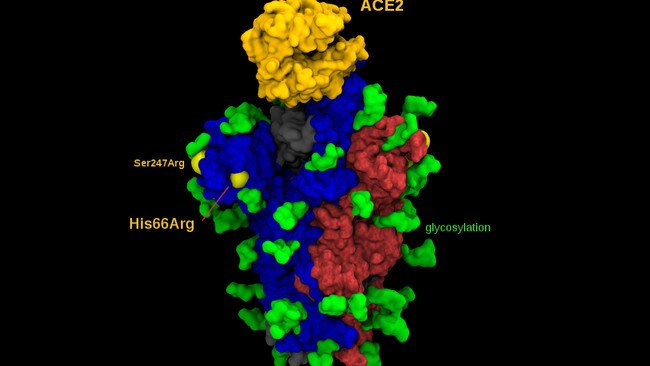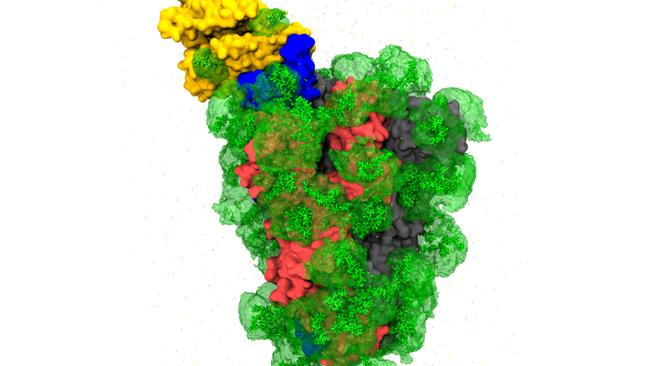Australian scientists at Data61 use virtual reality to help stop COVID-19 virus reproduction
Australian data scientists are using virtual reality modelling to learn how to attack the operation and reproduction of coronavirus.

Australian data scientists are using virtual reality modelling to learn how to attack the operation and reproduction of coronavirus.
Dr Michael Kuiper at Data61, the digital research arm of Australia’s CSIRO, says three-dimensional simulation has made it possible to observe the mechanics of the virus’s spike protein, the protruding sections of the coronavirus cell that latches onto human cells and contaminates them.
“All the spiky bits that you see in all the images – that's the spike protein,” he told The Australian.
Dr Kuiper is a biomolecular modeller at Data61. He says he takes the structural data of proteins and molecules and simulates their operation on computers. Now he can also visualise them in 3D in VR.
Australian data scientists at Data61 are using virtual reality modelling to learn how to attack the operation and reproduction of coronavirus https://t.co/vKyeFsqgWJ #Coronavirus #COVID19 #virtualreality #VR @australian @Data61news pic.twitter.com/mIpVlIRZrf
— Chris Griffith (@chris_griffith) June 17, 2020
“We take these components and we put them into lifelike environments, so we include things like water and ions,” he says. “It’s basically Newtonian mechanics. We simulate how these components move, and then we use programs to visualise this.”
He says his aim is to observe in detail the operation of the virus’s spike protein and then look at the possibility of inserting another substance that it will latch onto instead of a human cell. This would stop the virus spreading.
He said virtual reality had “changed the game” in structural biology. “Once you understand how the virus is constructed, you can start to figure out how the virus actually attaches to the human cell, and how it could be stopped by drugs.”
He says that when coronavirus infects a cell, it starts making the machinery to help it replicate and make more virus. He says coronavirus is a “very finesse machine”, so if you can inhibit any part of the process, you can slow its replication and maybe even stop it reproducing,

His approach therefore is to examine doing this from a mechanical perspective. “We are trying to understand that initial process, what makes the virus attach in the first place, and how specific that is.”
He says it makes a huge difference being able to examine a 3D object in three dimensions, which is what virtual reality allows.
“This is the wonderful thing with VR technology. If you imagine looking at a CAD drawing of an engine … on a two dimensional screen, it's always going to be two-dimensional,” he says.
“You can rotate it around, so it gives you a sense of 3D but it's not true 3D.
“When you step into virtual reality, you're basically seeing stereoscopic vision so all of a sudden you see the objects, right before you, and you can actually hold on to those objects and manipulate them as if they were floating in air in front of you.”

He says VR also was enhancing international collaboration. He can discuss the virus with other scientists across the world who are all in the same virtual room looking at the same virus.
He said the aim is to design “an inhibitor molecule” or peptide that can interfere with the spike protein’s operation. He says a number of people have been trying this strategy.
“There are specially made molecules which basically are trying to bind to the virus, instead of the virus binding to a human cell. We're trying to trip up the virus and slow down the infection rate.”
He says the research is taking into account the different strains of coronavirus.
He says Data61’s research is feeding into the CSIRO’s broader effort into combating coronavirus.



To join the conversation, please log in. Don't have an account? Register
Join the conversation, you are commenting as Logout